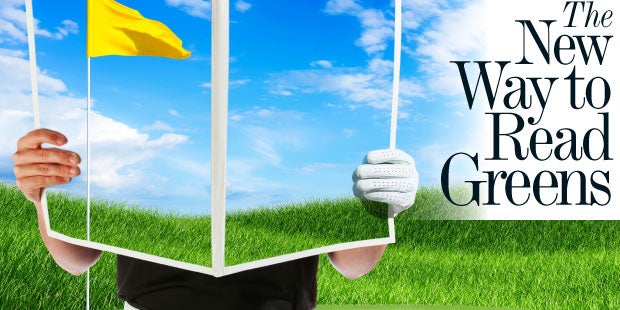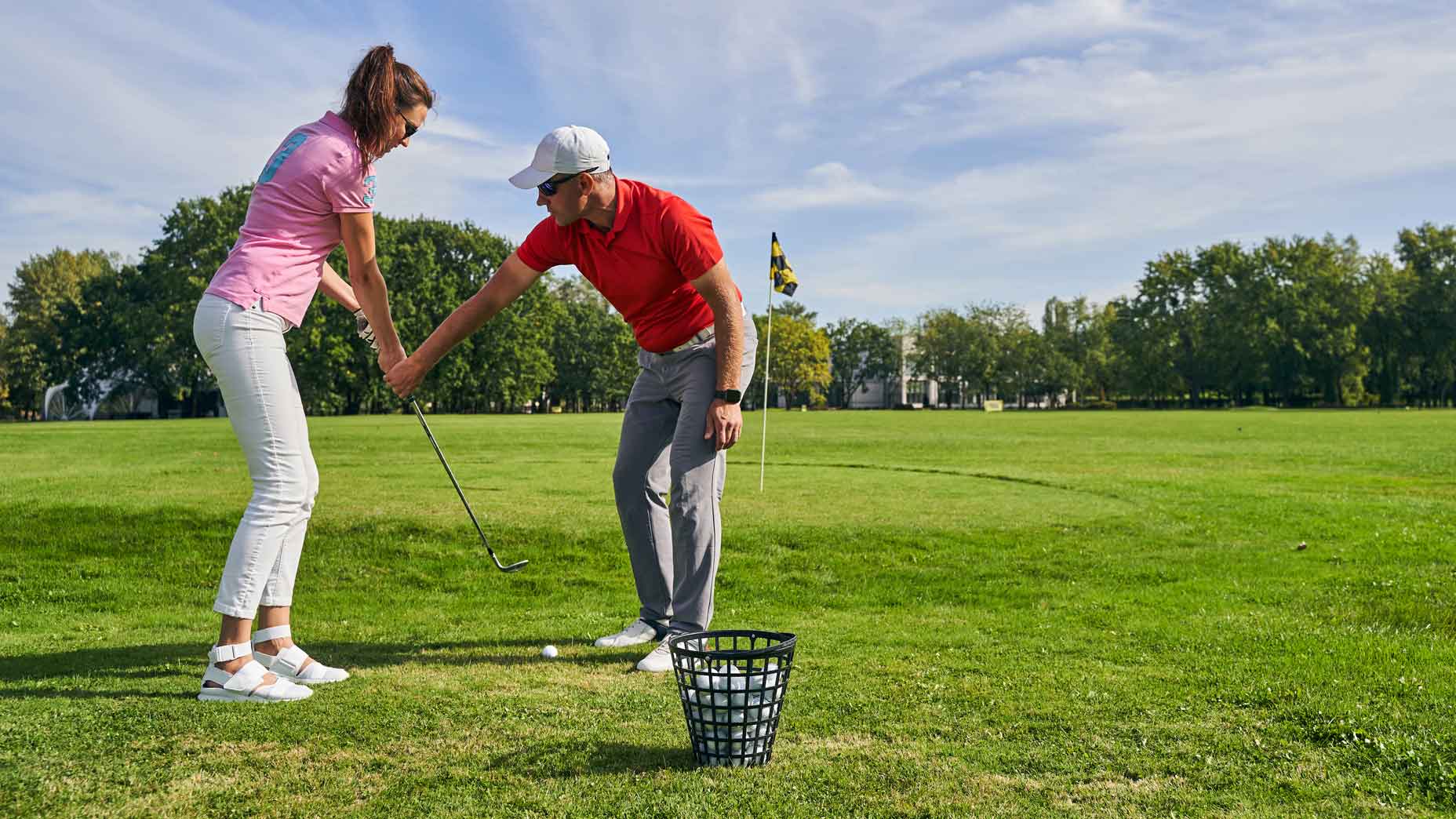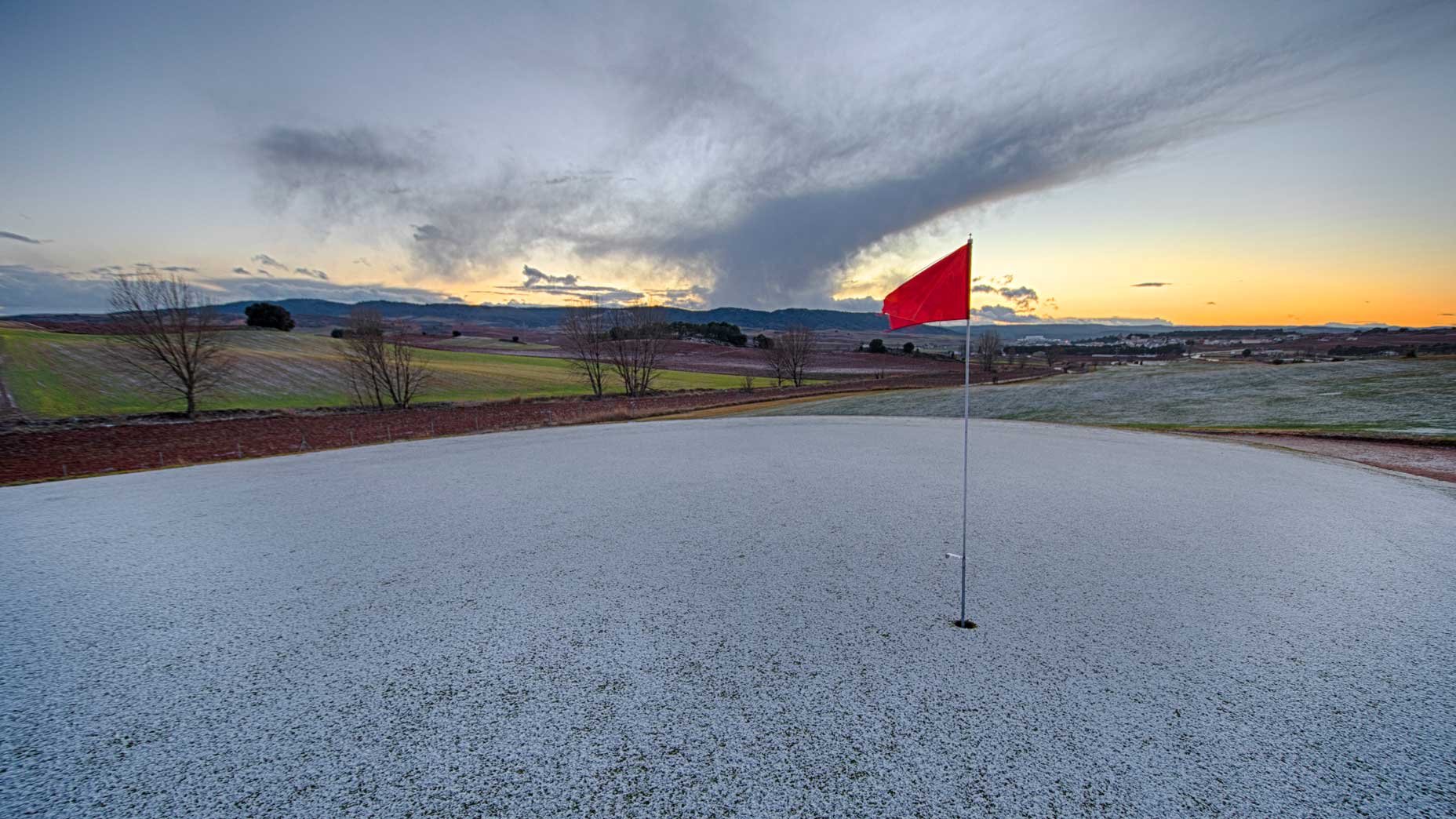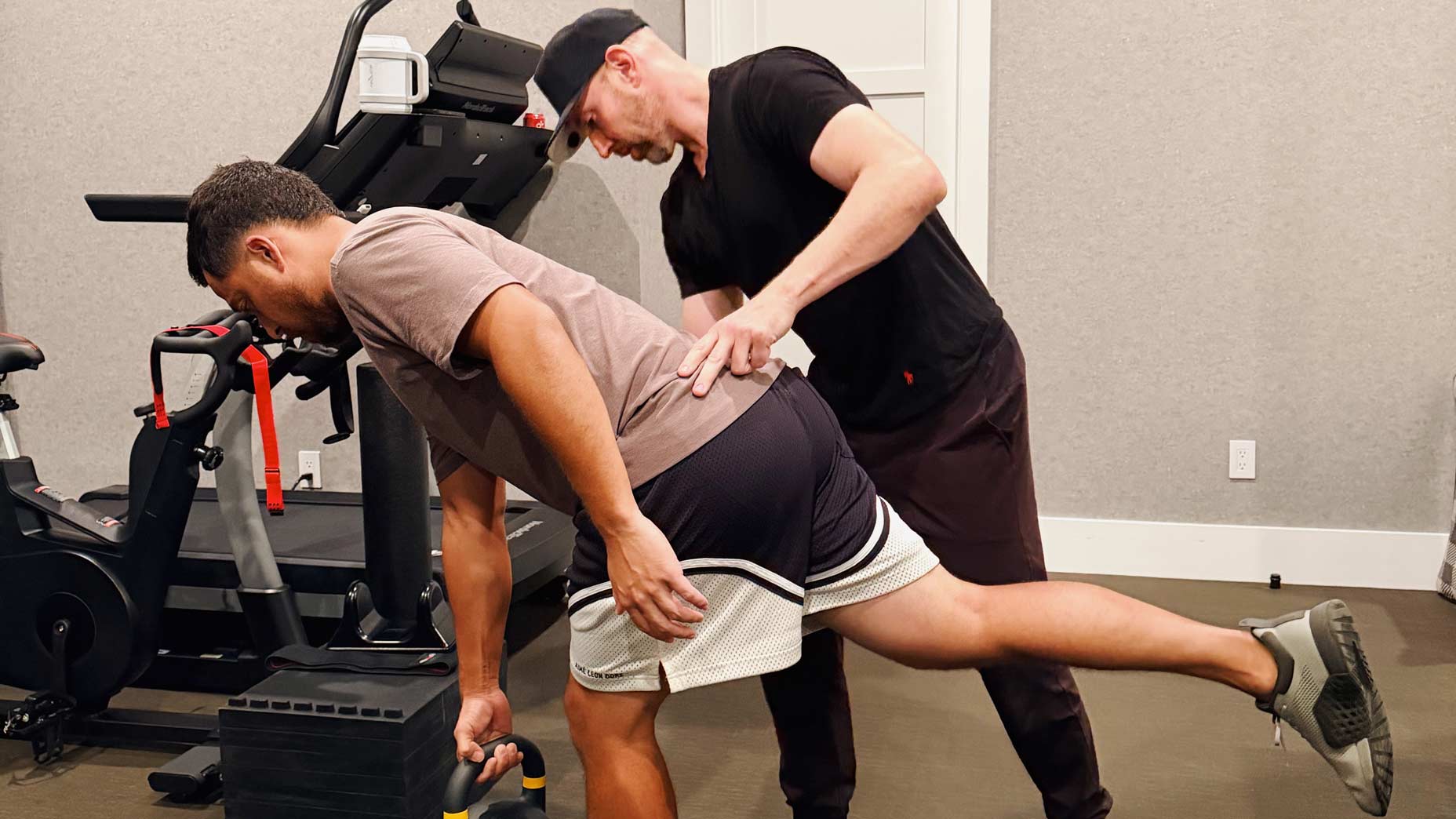You read almost every putt, but if you’re like most players, your routine is guesswork disguised as green-reading. That won’t get you close to the hole, let alone “in.” You’re not the only one reading, and weeping, on the greens.
A new Golf Magazine study shows that America is massively misjudging the slope under its collective FootJoys, under-reading putts by a whopping 65 percent, on average. As a new season beckons, now’s the time to raise your reading level—and save a fistful of strokes. PGA Tour star Adam Scott has cracked the code, becoming the world’s best green-reader, so start by trying the 11-time Tour winner’s groundbreaking method.
Beyond Scott, we have six more easy-to-learn techniques from golf’s keenest putting minds. You’ll soon detect the subtlest bumps, bends and breaks, learning to read the trickiest greens as if they have subtitles.
FIRST THINGS FIRST: We Seriously Under-Read Our Putts!
Sixty-five percent of golfers under-read the break on a typical putt, according to a Golf Magazine–sponsored study conducted at the Pinehurst Golf Academy. All of these flawed reads add up to lots of lost strokes, even with perfect putting technique. In our study, we assessed the green-reading skill of 72 golfers just like you. Initially, our research team simply sought to determine the ideal position from which to accurately detect slope (behind the hole, behind the ball, etc.), but results showed view position to be meaningless to good green-reading. Our study subjects misread everything, no matter where they stood or crouched. Some 25 years ago, Dave Pelz told everyday players to triple the amount of break they saw, and that’s as true now as it was then.
Here’s how to see the correct line every single time!
[pagebreak]
1. Give Yourself an Eye Exam!
Do your peepers deceive you? You can’t read putts unless you can judge distance.

By Craig Farnsworth, O.D. See and Score Golf Schools, The Palms G.C., La Quinta, Calif. puttdoctor.com | @CraigFarnsworth
When talking green-reading, we tend to focus more on breaks rather than on distance, because golfers think distance is easier to discern than tilt.
As an optometrist and sports-vision specialist, I know that’s not the case. Many players I work with are “depth-deficient,” perceiving the location of the hole as closer than it is. In some cases, their perceptual error is 25 percent—that means that a 25-footer looks like it only needs to travel 20 feet. Those five feet of misjudgment cost you.
One of the first things I do with a new client is to make sure they don’t suffer this malady, which is as common as freckles—and just as threatening if left untreated. Give yourself an “eye exam,” using the depth-perception test above.
ASSESSING YOUR RESULTS
If you’re like the majority who take this depth-perception test, you ended up pointing to a spot on the ground (or green) well short of the real target, which floods your motor systems with an improper distance to react to. You putt to an illusion instead of the hole. Don’t panic—this is a minor ocular flaw. Yet the effects can wreak havoc on your reads and your score. I’ve developed some quick, easy ways to offset the tricks your beautiful blues can, and will, play on you.


1. Judge distance from the side of the putt, not from behind the ball. This gives you much better appreciation of the overall putt length. Remember how far the putt looks from this perspective, then go back to the ball to complete your read.
2. “Walk” off the distance with your stroke. From the side of the putt, point your putter at the ball, then pass it over an imaginary line running from the ball to the cup at the same speed you want the putt to roll (above). Moving your putterhead from the ball to the hole at the proper speed when you’re calculating distance helps your brain move your arms and putter with the correct amount of energy when you putt the ball for real. Yes, you can do this by simply scanning your eyes over the line, but studies prove that using your eyes and hands in tandem enhances brain performance much more than using only your eyes.
[pagebreak]
2. Assess the Green from the Low Side
Looking “up” at putts makes reading break as easy as reading a magazine.

By Todd Sones Todd Sones Impact Golf Schools, White Deer Run G.C., Vernon Hills, Ill. toddsones.com | @ToddSones
The debate over whether to read putts from behind the hole or behind the ball is a hotly contested one. For me, the correct answer’s a no-brainer: It depends. Different putts demand different perspectives in order for your eyes to accurately assess both distance and slope. Here’s a simple guide:
If your putt is downhill, read it from behind the hole.
If your putt is uphill, read it from the behind the ball.

Note that in both cases you’re reading the green from the low side of the putt. Favoring the low side positions your sight lines perpendicular (or closer to perpendicular) to the slope when you crouch, so you look into the hill, not down it.
Does it make a difference? Grab a book or magazine and try reading it while tilting it away from your eyes. It’s impossible. The words are blurry, and images on the page narrow toward a vanishing point, like railroad tracks on a long straightaway (above, right photo).
You get the same perspective disruption when you read putts from the high side; like a tilted book, the green ends up running away from you, making the distance between the ball and the hole look longer than it is.
Read putts like you read a magazine—with the green right in front of your face. Much modern green-reading instruction is based on science. This one is pure common sense.
3. See It Like Adam Scott
Since taking up my AimPoint Express technique, the hard-hitting Australian has become the top green-reader on Tour.

By Mark Sweeney AimPoint Technologies, Orlando, Fla. aimpointgolf.com | @AimPointGolf
AimPoint’s predictive putt technology can calculate any break on any green. It’s powerful stuff, but some users find it difficult to digest. So we developed a quicker— and easier—way to use it, called AimPoint Express. No sooner did we invent this technique than we caught Adam Scott express-reading his putts at the 2014 Honda Classic. (Turns out his coach, Brad Malone, had taken an AimPoint class, and promptly passed the technique along to Scott.) Adam captured the Crowne Plaza Invitational a few months later, then reeled off 11 straight top 16 finishes, including seven top 10s.
I met with Adam before the 2014 Masters to help refine his technique, which involves reading putts with your feet, not your eyes, and holding up your fingers to pinpoint the correct aim line. Obviously, he’s a quick learner. In 2013, Adam ranked 103rd in Strokes Gained Putting. Last year he was 55th. Expect him to keep trending upward in 2015.
[pagebreak]
4. Block Out “Noise” Pollution
The only slope that matters is the one between you and the hole.

Marius Filmalter Marius Golf, Dallas, Texas mariusgolf.com | @marius_golf
Good green-readers “work off horizontal.” This term means that they look for a flat line in the background, then compare how much the green around them tilts in comparison. Even on severely undulating greens, horizontal lines are easy to spot. Look for:
- The eaves and windows on the clubhouse or halfway house
- Benches
- Bodies of water

If you aren’t able to locate a horizontal standard, use the brim of your cap or visor. Better yet, curl your hands around your face, with your fingers above your eyebrows and your palms blocking out your peripheral vision. This creates a pure horizontal directly above your eyes, and it also eliminates a lot of the visual “background noise” that can interfere and confuse your reads.
No, Henrik Stenson isn’t playing peekaboo above. Many Tour players use their hands and cap to see a putt’s true slope; it helps give them a clear, clutter-free view of the line. For best results, drop the brim of your cap or your fingers to the back edge of the cup, to block your view of the green beyond the hole. Ignore anything past the cup. Often, the green’s apron or the lips of nearby bunkers will tilt in a different direction than the ground you stand on. Don’t let this “noise” distract you from your read.
5. Weight Watch
Lean away from the break as you stand at address to maintain your view of the perfect line.

By David Edel Edel Golf, Austin, Texas edelgolf.com | @EDELgolf
Our bodies are wired to see things as level. Your subconscious likes flat. Unfortunately, this internal gyroscope is causing you to mis-aim your putter at address, spoiling your good reads (when you make them).

For example, on a left-to-righter, the natural tendency is to lean with the slope as you settle into your address position, toward your toes, until your eyes are level with the tilt of the green. You do it without even thinking. But that makes your eyes shift outside the ball, causing you to aim left of your chosen line. The opposite happens on right-to-left putts; you lean toward your heels, shifting your eyes inside the ball, and you aim too far to the right. Hey, it’s just our natural design, but it’s a huge putting problem, compounded by the fact that your shoes feature heel wedges that slope as much as two degrees—an added tilt that further distorts your feel for break at address.
The fix? On a breaking putt, lean in the opposite direction of the slope you’re standing on, or into the hill. This helps fight the visual distortion that your subconscious leveling system causes. Make it subtle—a little flex in your ankles in either direction will do. Shift your weight into your heels on left-to-right putts, and into your toes on right-to-lefters. Most of my students can aim straight at the hole from 10 feet away on a flat putt, yet mis-aim by two feet from the same distance if the putt has break. It’s because they fail to adjust for the posture change facilitated by our body’s need to make the world around us appear flat.
[pagebreak]
6. Read Putts Like a Clock
To simplify your reads, visualize where the ball will enter the cup, then let your body and stroke react to what you see.

Mike Shannon Sea Island Golf Performance Center, Sea Island, Ga. seaislandgpc.com
Great green-readers—Loren Roberts comes to mind—have a knack for “feeling” how a putt will break the moment they read it. It’s more instinct than hard geometry. For more Jedi-like reads, try this.
When you reach the green, picture a clock on top of the hole, with six o’clock pointing at your ball. As you assess your line, imagine where on the clock your putt will roll over and fall into the cup.
Then, simply react to the position on the dial. For example, if you see your ball falling into the cup at eight o’clock, focus on that edge of the hole as you settle into your address position, then smoothly let that line guide your stroke. If your mind’s eye sees the putt entering the cup at four o’clock, then focus only on four o’clock.
Reading and putting this way is similar to how a quarterback completes a pass to a receiver crossing over the middle; he focuses on the receiver, then taps into his instincts to hurl that pigskin far enough ahead of the receiver so he can catch it in full stride.
Find your entry point, then let instincts take over. After all, your goal is draining putts, not perfect reads.
7. Conduct a Side-to-Side Survey
A horizontal read is more effective than a vertical one.

James Sieckmann Shadow Ridge C.C., Omaha, Neb. jsegolfacademy.com | @jamessieckmann
Your tendency is to scan the putt from the ball to the hole and back again, or vertically. That’s a good way to determine if the putt is moving uphill or downhill, but it doesn’t help you see how much side-to-side tilt you face. You’ll glean more information by scanning the putt horizontally. Making a side-to-side assessment in your green-reading routine will have you judging break like a cagey pro. Here’s how:
Step 1: From behind the hole, examine the final three feet of the putt.
Step 2: In you mind’s eye, picture two coins on the green, one on each side of an imaginary line running from the ball to the cup. Make the coins about four feet apart.
Step 3: If you haven’t already, squat down, then run your eyes horizontally between the coins. In the event the green tilts, you’ll immediately notice that one coin is lower than the other, giving you a clear idea of the direction and severity of the slope.
Step 4: Walk behind the ball, and repeat your horizontal scan from coin to coin for the first half of the putt. You now have a complete picture of slope. For best results, drop actual coins on the green when you practice. After a while, your reads will be absolute money.
For more news that golfers everywhere are talking about, follow @golf_com on Twitter, like us on Facebook, and subscribe to our YouTube video channel.






